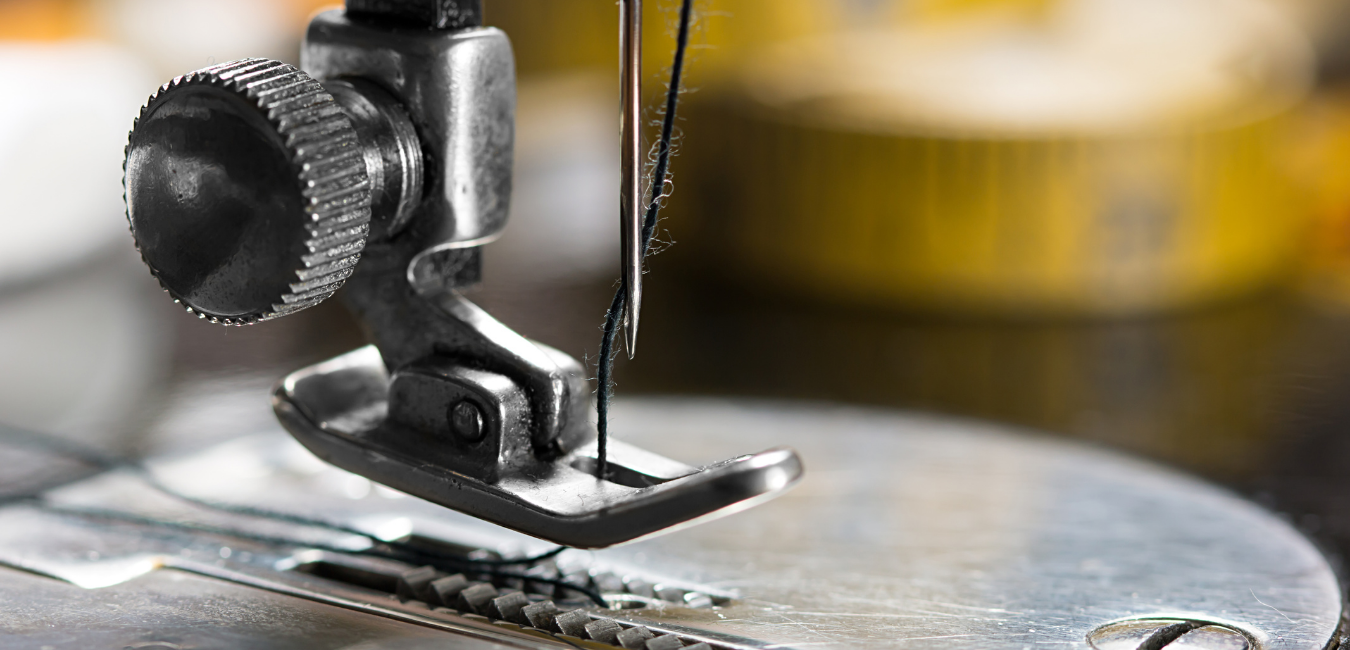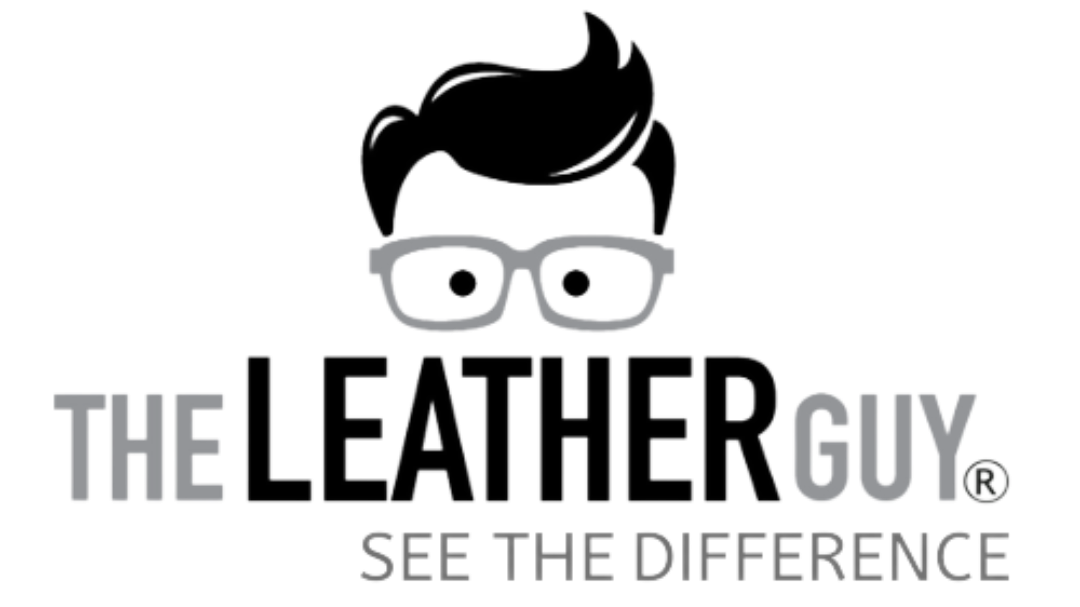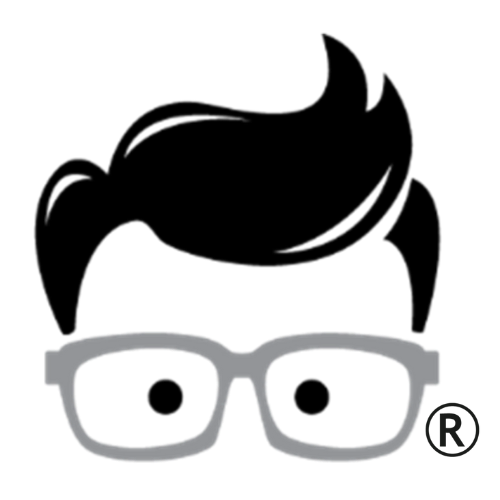Are You Shopping For An Industrial Sewing Machine? We Can Help!

Up until recently, all of my leather goods had been hand stitched. However, as I started getting more orders, I realized it would be much more efficient to use a sewing machine.
When I eventually decided to go for it and buy a machine, I spent hours and hours researching industrial machines. They are definitely not cheap, so I wanted to really be sure I was making the right choice.
Since I started, I have compiled a list of the most important components to look for when buying a machine! I hope that this helps eliminate some of the confusion that you may have about industrial sewing machines!
How can you tell if a sewing machine is trustworthy?
If it seams legit – hah…get it….. seams legit…keep reading if you want to learn which industrial machine features are really legit.
Walking Foot Feed Mechanism-

A walking foot feed mechanism literally walks over the leather, grabbing the material from the top and bottom in unison.
Standard machines usually have a drop feed system that slide the material under the foot. This works well for many fabrics but can cause bunching and puckering in leather since it is kind of a grippy material.
Instead, the best option for leather is a walking foot, which moves in unison with the bottom feed and allows the leather to pass through smoothly and evenly.
Speed Reducer

There are two things that speed reducers do. They multiply the torque generated by the motor while simultaneously reducing the speed.
This was a slightly confusing concept for me, so simply put- a speed reducer allows you to go very slowly and maintain the torque required to penetrate the leather.
This is especially helpful when stitching around corners or stitching something very intricate. Some machines come with a speed reducer already installed and some can be installed after purchase as well.
Servo Motor

During my research, I kept seeing “Servo motor” pop up in articles or videos. It was clear that when compared with the standard clutch motor, there were some major benefits.
A servo motor only runs when the foot pedal is pressed down. This not only makes for a quieter machine but also helps save energy. Additionally, a servo motor will come with a speed control knob. This allows the user to adjust the top speed that the motor can run when the pedal is fully pressed down. Together, a speed reducer and a servo motor will give you 100% control of the speed with no fast or slow surges.
The next components covered are a bit more specific and will vary depending on your particular project.
Thread and Needle Size

Both thread and needle sizes come down to the type of project you will mainly be working on, as well as your visual preference. Obviously, with a larger needle, larger holes will be poked.
Fun fact – there is a type of needle called a “wedge point” that was specifically designed to sew leather. It is shaped like a tear drop or a “wedge” which allows the needle to cleanly pierce the leather. Standard round needles must aggressively punch holes which will leave them irregularly shaped and messy looking.
A heavier thread will stand out more on the piece, which is preferred by some, while others favor a more discrete thread look.
The thread that I have been using is a bonded nylon in size 138. I primarily make bags/purses and wallets and have found it to be a good size that compliments both types of projects. Size 69 thread is probably the lightest thread size that would be okay to use in an industrial machine.
The thread that I have been using is a bonded nylon. It is flexible, easy to work with, and UV resistant, so it will resist yellowing over time.
Presser Foot Height

Another aspect of an industrial sewing machine to be aware of is the presser foot height. If you are planning on making thick leather goods like belts and saddlery anywhere from 10-13oz, make sure to check the presser foot height of the machine before buying.
You do not want to find out that your machine will only accommodate your thinner projects. My machine has a max foot lift of 5/8in which has been more than enough for even the thickest pieces I have sewn so far.
Flatbed vs. Cylinder

Choosing between a flatbed and cylinder bed machine one of the more difficult decisions I had throughout the buying process.
A flatbed machine comes with a flat surface area to rest the project on while it is being stitched. Generally, flatbed machines are ideal for sewing things that are flat and have a straight line. For example, if you primarily make wallets, a flatbed will serve you much better than a cylinder head will.
However, if you are making bags, saddlery or anything else that has hard to reach seams, a cylinder bed (or arm) is the way to go. This machine has an arm that extends out and allows the user to get in the awkward angles that a flat bed would not be able to.
Since I started making more bags, I decided that at cylinder bed machine would be a better option for me. Also, there are flatbed attachments that are made to put on a cylinder machine. This way the machine technically can be either a cylinder or a flatbed machine.
OH! Before I forget to mention it, don’t forget to oil that baby on the regular! An oiled machine is a happy machine and can last many, many years if maintained properly.
After months of research, and with the help of my boss here at The Leather Guy, I purchased a Cowboy 3200! In my short time of owning it, it has already proven to be worth the investment – and my neighbors are so happy they no longer have to listen to me pounding holes every night!
There’s a pretty steep learning curve at first but I am already starting to get the hang of it after about 3 weeks. I’m very happy with my choice of machine and have been whipping out a whole lot more pieces than I could ever have by hand stitching.
There are plenty of other awesome machines out there too, so make sure to take the time to learn which one would fit your needs the best. I hope that this has helped you gain some knowledge/make decisions about your industrial sewing machine purchase!
Hey Guys, Taylor here and I just want to thank our intern Hattie for providing a first person account on shopping for an industrial machine! If you'd like to watch Hattie's progress and see what she's working on, check out her business's Instagram rosieleatherco


